- About MAA
- Membership
- MAA Publications
- Periodicals
- Blogs
- MAA Book Series
- MAA Press (an imprint of the AMS)
- MAA Notes
- MAA Reviews
- Mathematical Communication
- Information for Libraries
- Author Resources
- Advertise with MAA
- Meetings
- Competitions
- Programs
- Communities
- MAA Sections
- SIGMAA
- MAA Connect
- Students
- MAA Awards
- Awards Booklets
- Writing Awards
- Teaching Awards
- Service Awards
- Research Awards
- Lecture Awards
- Putnam Competition Individual and Team Winners
- D. E. Shaw Group AMC 8 Awards & Certificates
- Maryam Mirzakhani AMC 10 A Awards & Certificates
- Two Sigma AMC 10 B Awards & Certificates
- Jane Street AMC 12 A Awards & Certificates
- Akamai AMC 12 B Awards & Certificates
- High School Teachers
- News
You are here
Mathematical Treasure: Edward Strachey’s Translation of Bhaskara’s Bija Ganita
Bhaskara (1114–1185) was an Indian astronomer and mathematician. Author of several works, he is credited with introducing the “Zero” as a placeholder in computation. (See his Lilivati in Mathematical Treasures here and here.) In 1813, Edward Strachey (1774–1832), a member of the British Civil Service in India, compiled Bija Ganita or Hindu Algebra, which is believed to be another of Bhaskara’s works.
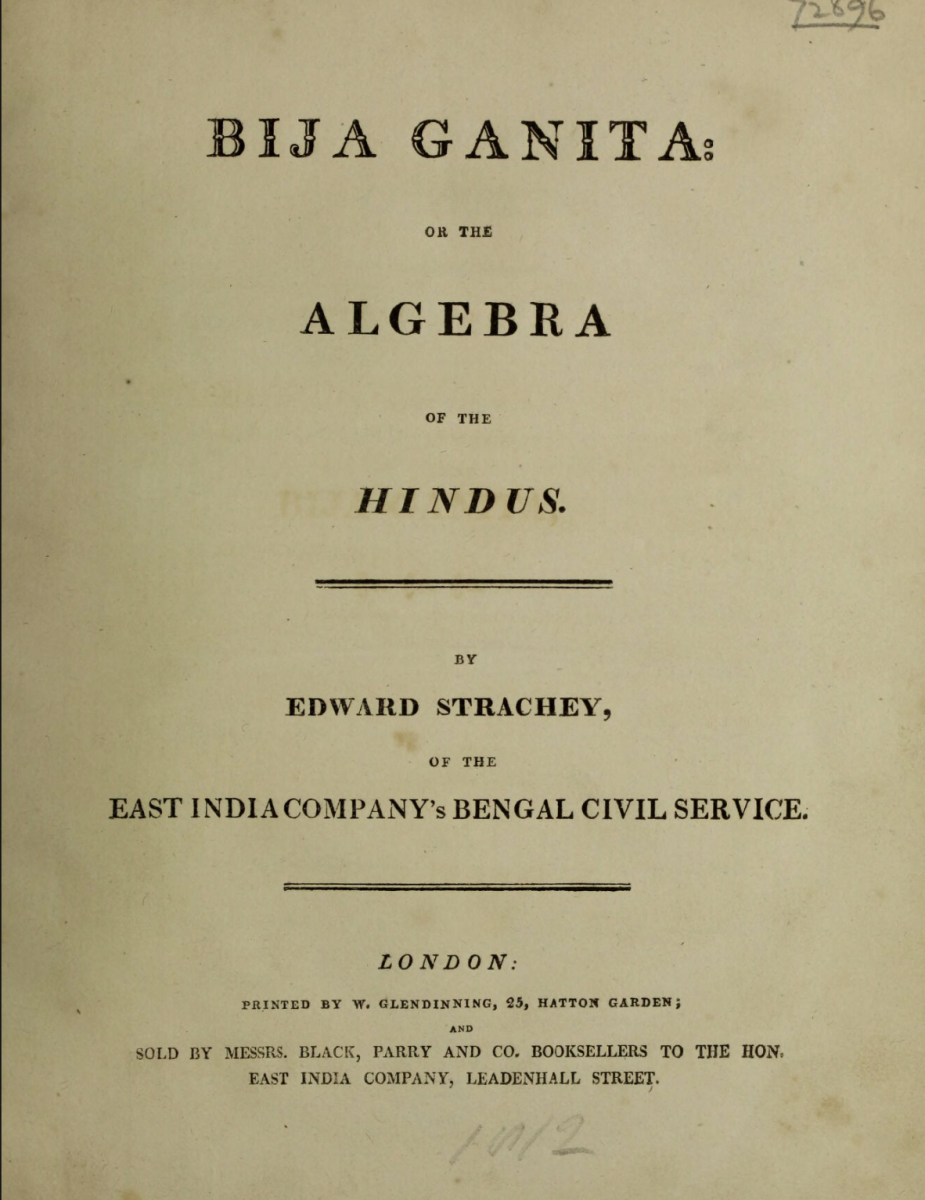
In his Preface, Strachey describes his sources:
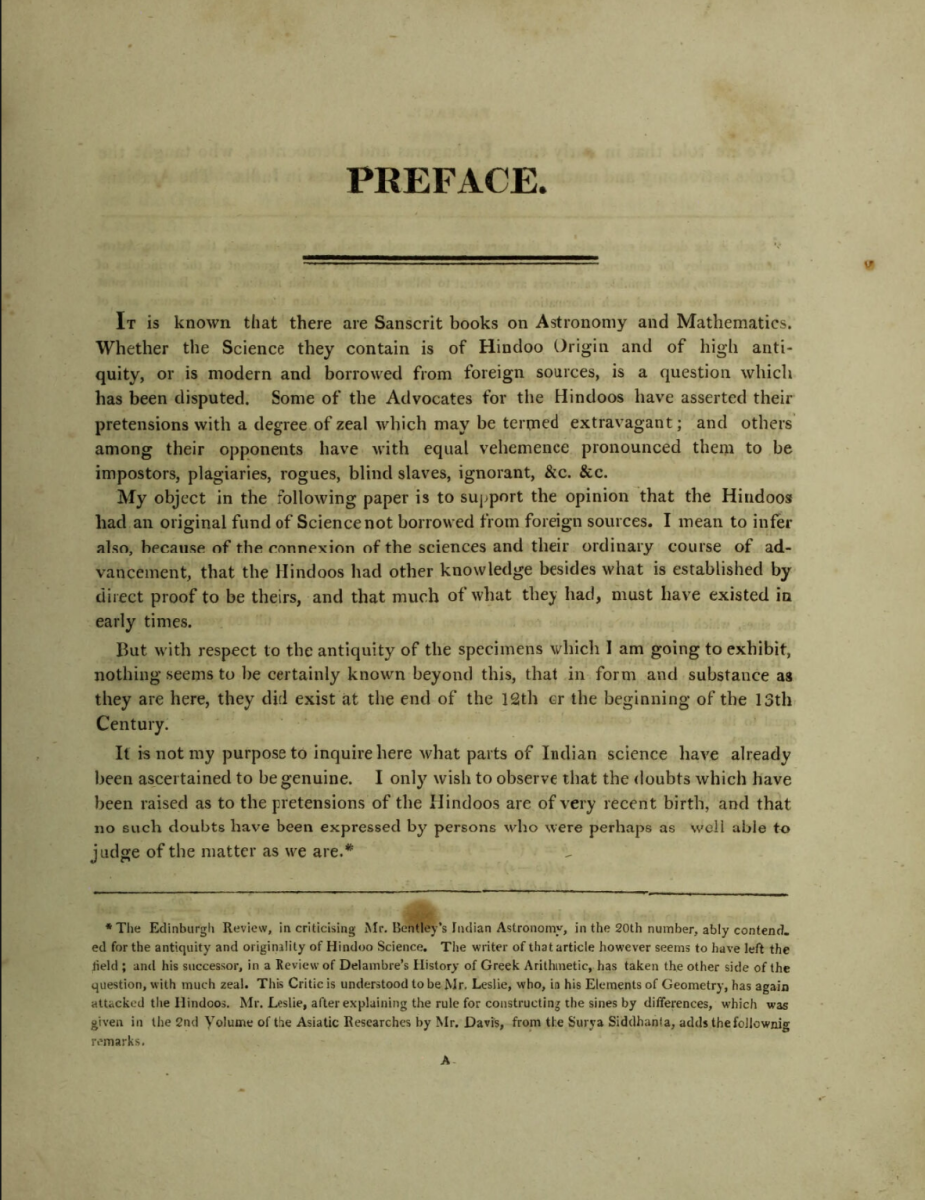
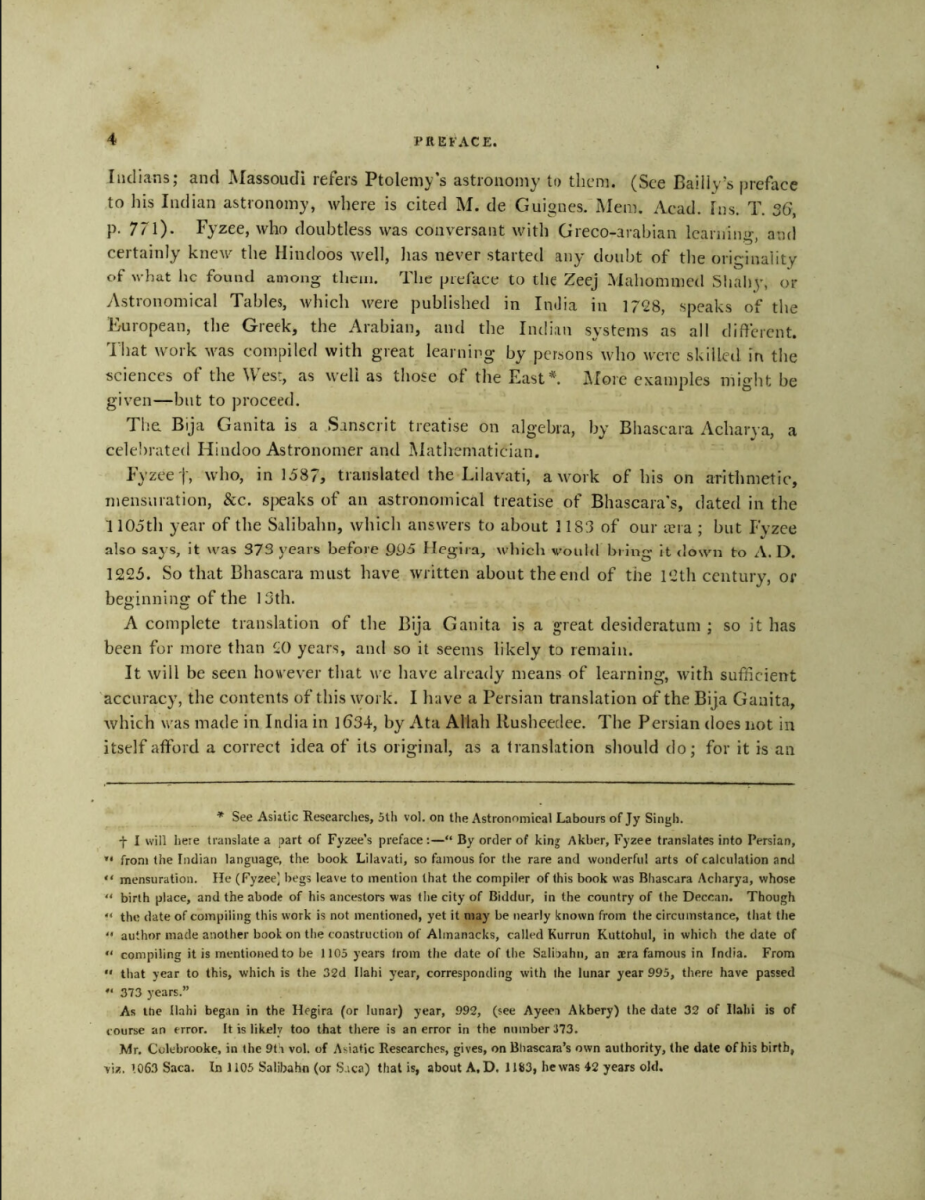
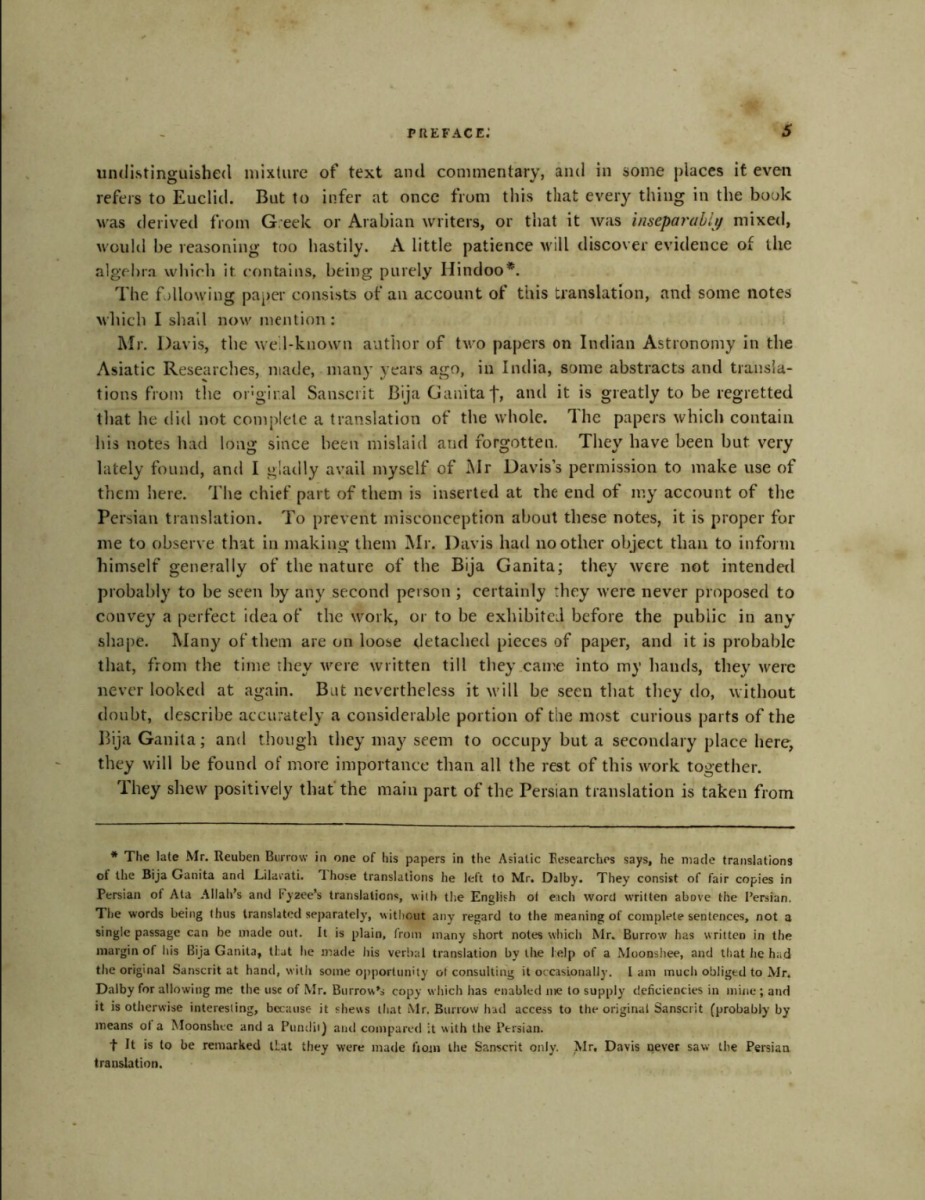
The first page of text:
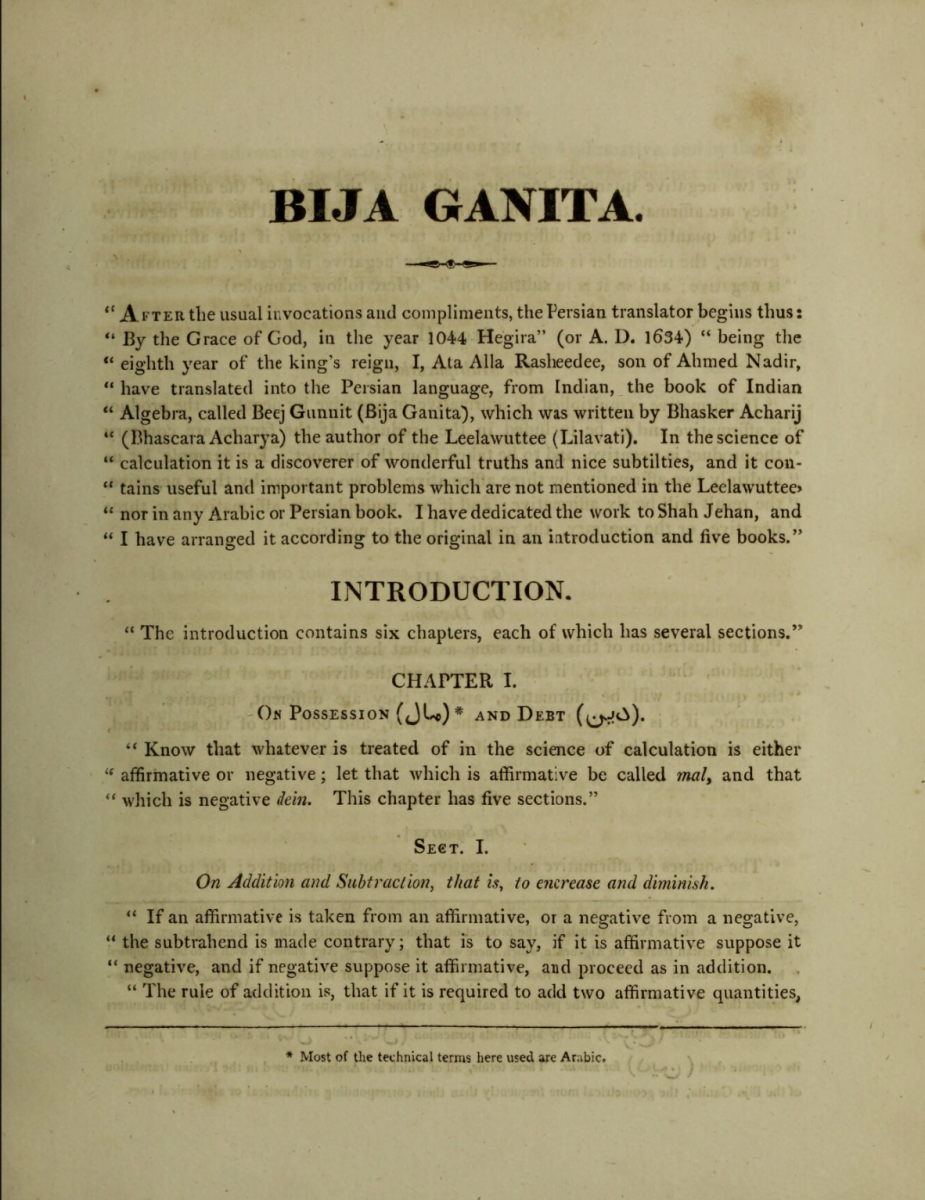
Samples of the presentation dealing with algebraic operations:
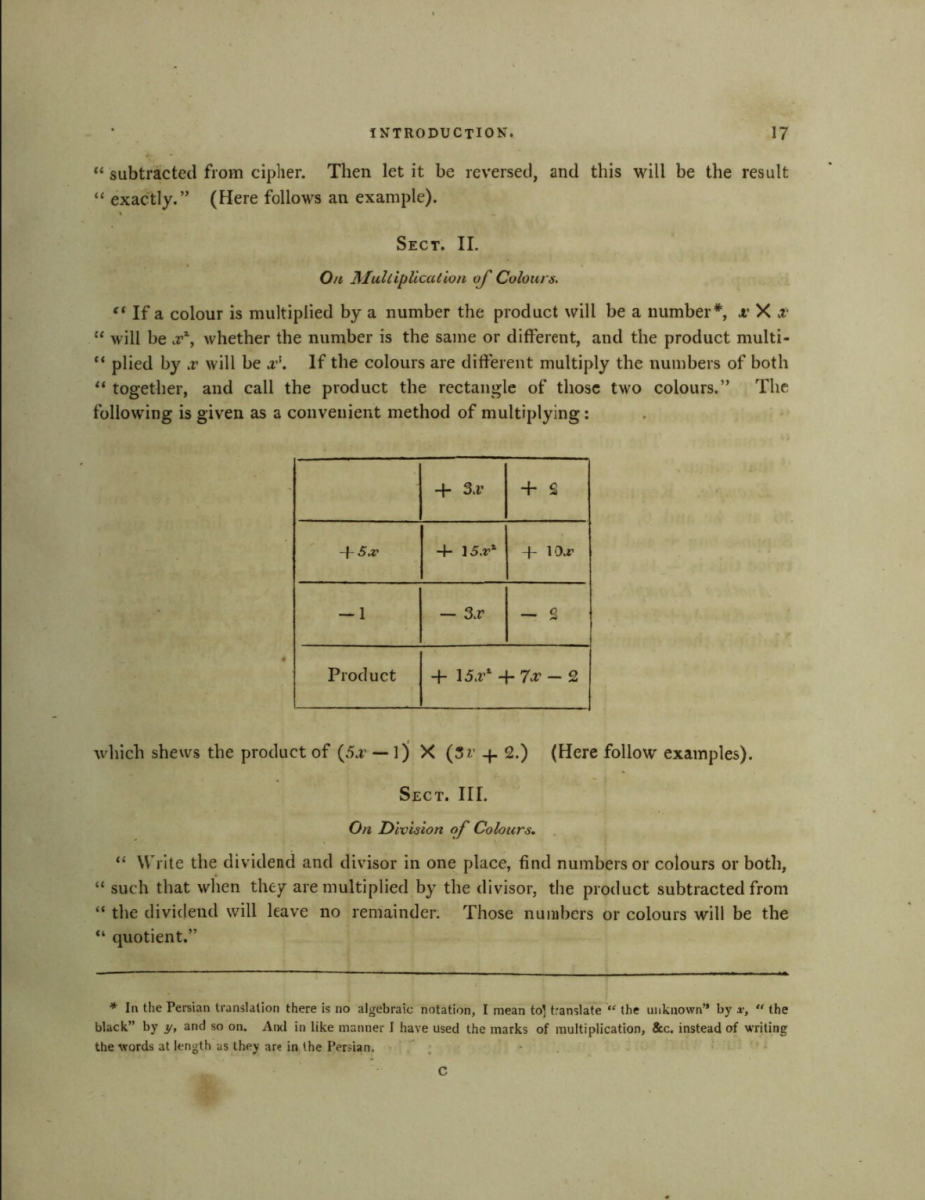

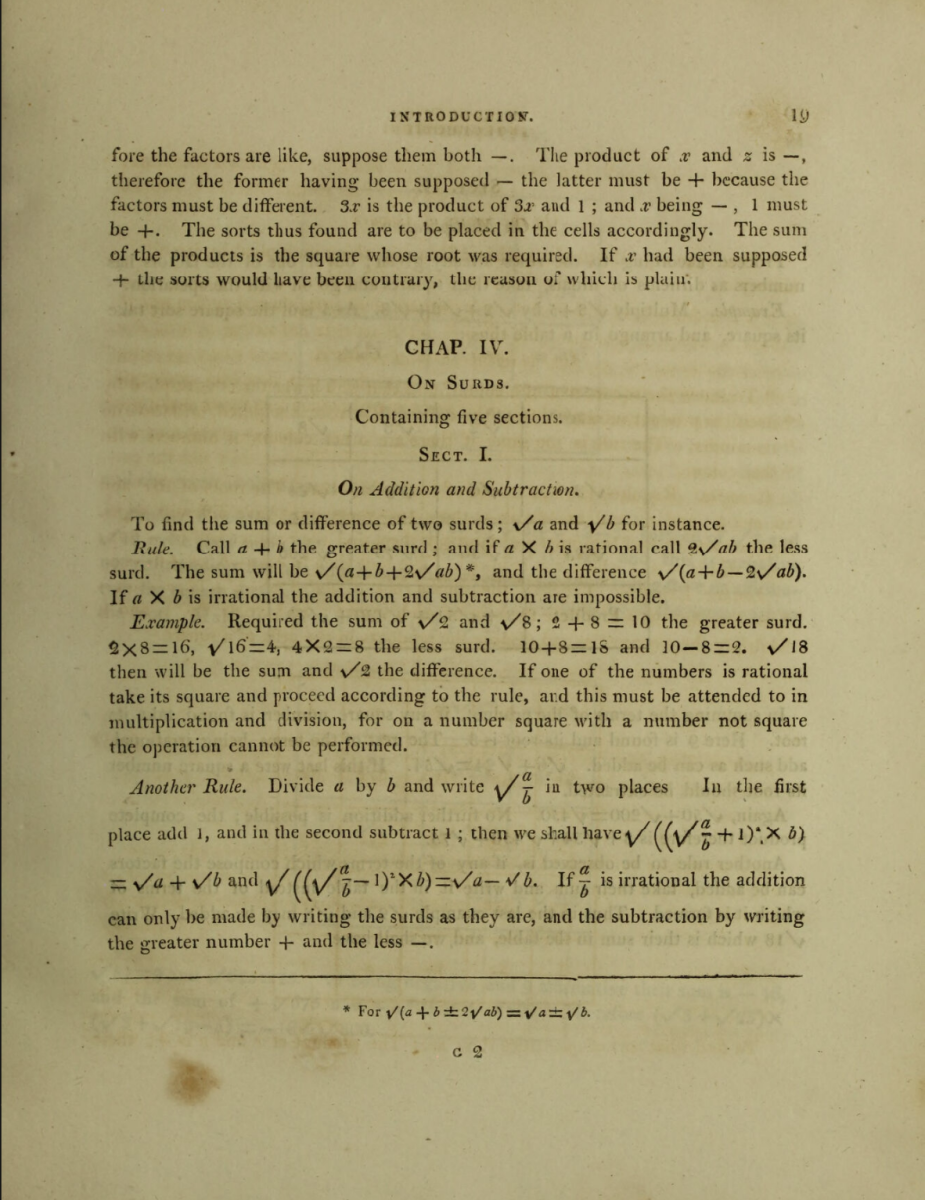
A glossary of Sanskrit mathematical terms:
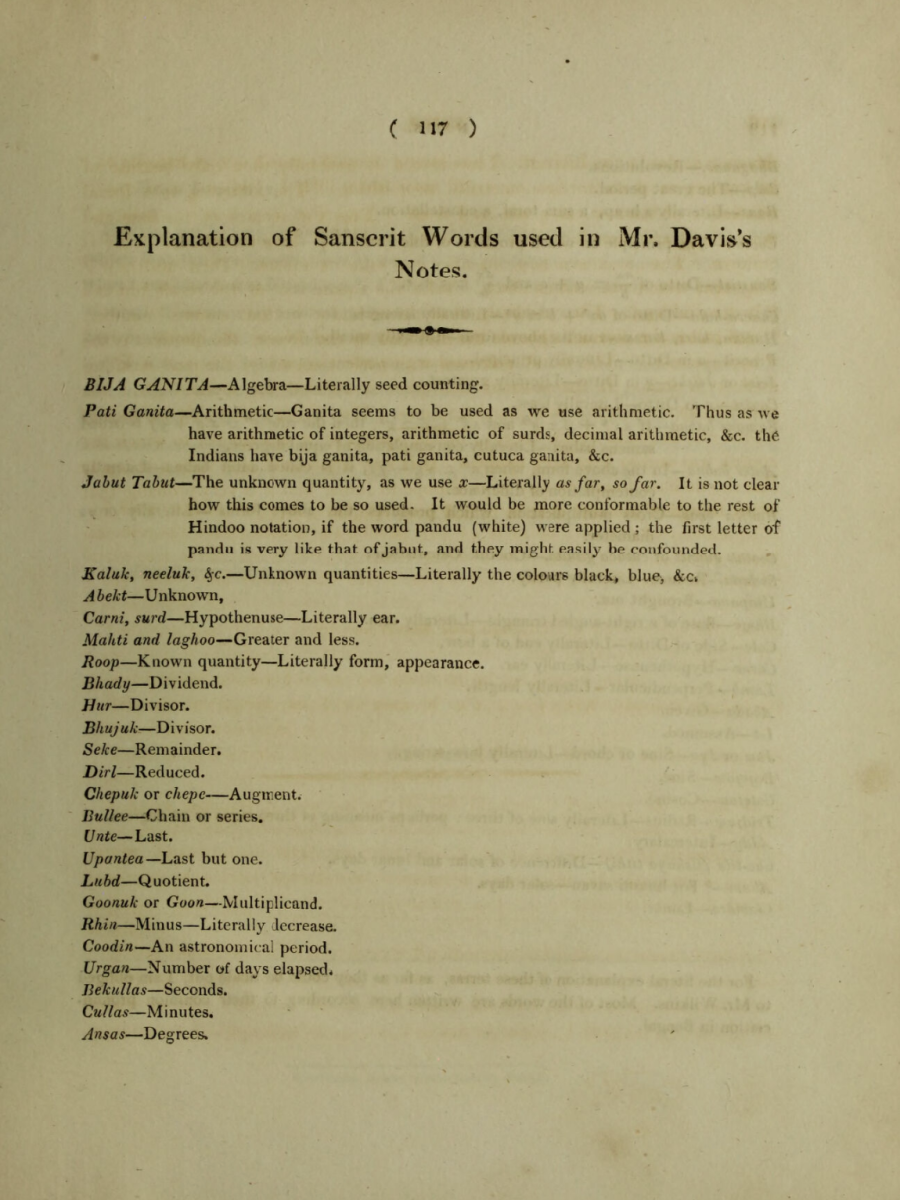
A full digitization of its copy is available from Wellcome Library.
Frank J. Swetz (The Pennsylvania State University), "Mathematical Treasure: Edward Strachey’s Translation of Bhaskara’s Bija Ganita," Convergence (September 2023)




